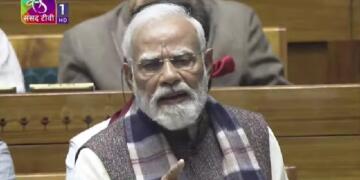BJP took a jibe at the Congress party after former Prime Minister Manmohan Singh presented an award to Finance Minister Arun Jaitley for GST Council. Congress president Rahul Gandhi has often termed GST as ‘Gabbar Singh Tax’ given its complicated structure and multiple slabs. Jaitley received Business Line Changemaker of The Year award by Manmohan Singh for GST Council. Previously Manmohan Singh has also criticized GST, “The small and unorganised sectors, which were vibrant and contributing to the generation of wealth and employment opportunities, have suffered in the wake of disastrous demonetisation and slipshod introduction and implementation of the GST,” he said while addressing convocation of New Delhi Institute of Management (NDIM).
Congress wanted a single rate GST. However, the single rate GST structure, similar to the kind Congress had proposed, failed miserably in Malaysia and the newly elected Prime Minister, Mahathir Bin Mohamad, announced that he would scrap the 6% GST rate. The Indian government and policymakers were smart enough to rule out the single rate GST proposed by the Congress Party. Had the BJP government implemented a single rate GST, India’s GST would have met the same fate as that of Malaysia.
A single rate would have caused inflation in essential commodities like food, medicine, essential services etc., and the elites of the country would have benefitted, because in a single rate GST, as Arun Jaitley rightfully said, “Hawai chappal and Mercedes car would have been taxed at the same rate.“
The India policymakers studied the GST structure across the world and decided to have multiple slab structure in a country as diverse and as complicated as India. Given the vast inequalities across the country and different needs in different regions of the country, it was better to have multiple slab tax system. If the government had gone for a single rate structure it would have been a regressive taxation system because the needs of the common person and that of billionaires would be taxed at the same rate.
As the indirect tax overhaul succeeded without any major negative consequences, the system could be rationalized in the future. The government has already put more than 99 percent of goods in below 28 percent tax slab. The number of slabs in GST could be rationalized in upcoming years, as suggested by Sushil Modi a few months back. “The GST council might replace the 12 percent and 18 percent slabs with a 14-15 percent one.” said Bihar Deputy CM and GST Council member Sushil Modi.
Had the government followed the Congress proposed model, its Antyodaya dreams would have remained unfulfilled. The GST model proposed by Congress is an elitist model at best in which essential commodities and luxury goods would have been taxed at the same rate. The Malaysian government which brought GST with a single tax rate model in 2015 scrapped it in 2018. Congress party should have taken a leaf out of the Malaysian example and have done some course correction, but they stuck to the same old tune, crooning it like a trained parrot at the mere mention of GST.
The only thing the Congress party has learnt in its last four years in the opposition benches is to oppose every move by the present government. The grand verdict is out – the Congress model of GST would have been a failure of gargantuan proportions.




























